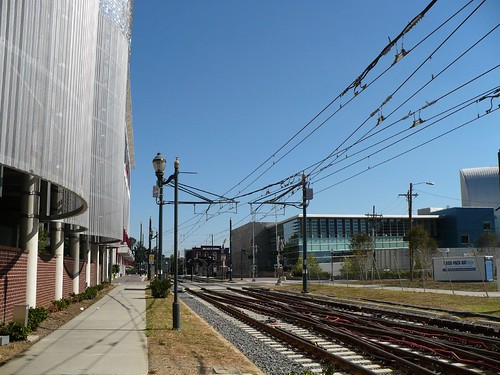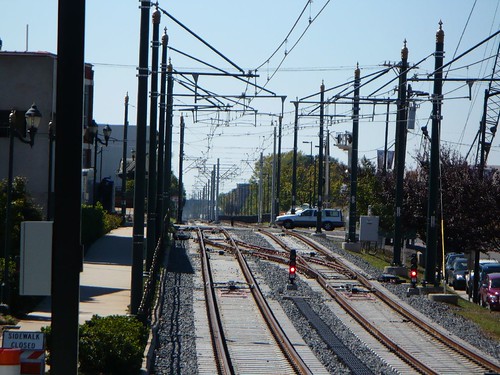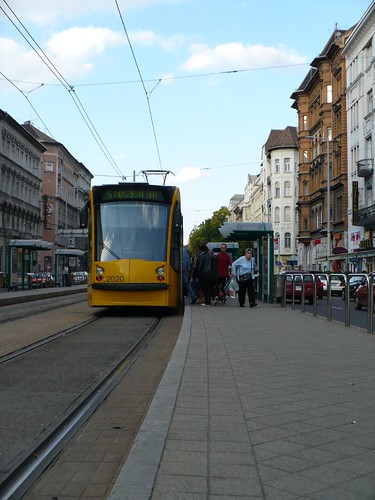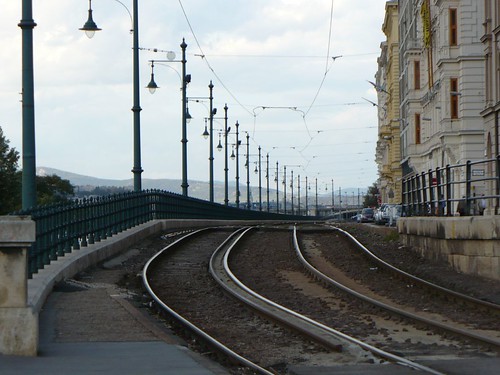Vancouver puts its hopes along the Canada Line into TOD
~~~
Is City Living the way to a wealthier nation? I'm not sure if it's just city living. I think it's creation of wealth through location efficiency. But currently our rules are set up to not let that happen.
~~~
Charlotte is master planning at the North End rail yards south to Dilworth. Wonder if they are thinking about the Ringstrasse? Could tie it together quite nicely.
~~~
Tuesday, September 29, 2009
El Paso - Juarez Commuter Rail?
They are thinking about it:
On Tuesday, Juarez Mayor Jose Reyes Ferriz and most of the Juarez city council accepted a resolution from the El Paso city council, saying the two cities will work together to create a commuter line between the sister cities.
Football Stadiums
Ok. I get it. They want more money. Stadiums such as football that get used 8 times a year are pretty much worthless in urbanism. But don't pretend that the Sprinter line is going to help bring lots of people to Chargers games. There's just not the capacity of the San Diego Trolley, which carry thousands of people to Chargers/Padres games. The Sprinter just doesn't have that capacity, mostly due to lack of train cars.
Chargers officials have said the site in Escondido is especially attractive because it's close to the Sprinter light rail line and freeways that provide easy access to San Diego, coastal North County and Riverside County.Is it just me, or are all football stadium planners just transportation illiterate? Maybe it doesn't really matter 8 days a year.
What You Make of It
There's a good post by Brad Plummer over at the New Republic on the difference in lifestyles in the United States and Europe and how it's one big political football. One of the things that isn't mentioned is cost and quality of lifestyle. I feel that if more cities had the option of urbanism, the ability to live in a real urban place as opposed to quasi urban, that many more people would as they say "instantly lower their carbon footprint".
Living here in San Francisco and visiting Chicago last weekend has shown me that honest urban places in the United States are hard to come by. And the reality is that in certain stages of a persons life, there is an opportunity and want to live this lifestyle that is often forgone for lack of availability. While my lifestyle in Austin during my last two years was fairly urban by Austin standards, I don't feel like the experience even closely matches up to what I've experienced here in San Francisco.
I also consider myself very lucky to live here, mostly because urban living can be expensive due to its popularity. But it's a trade off. It's trading road rage for crazy bus riders. It's trading a larger apartment for a smaller one and a pub around the corner you can head to if you're feeling cramped. It's trading a large yard for dolores park.
Living here in San Francisco and visiting Chicago last weekend has shown me that honest urban places in the United States are hard to come by. And the reality is that in certain stages of a persons life, there is an opportunity and want to live this lifestyle that is often forgone for lack of availability. While my lifestyle in Austin during my last two years was fairly urban by Austin standards, I don't feel like the experience even closely matches up to what I've experienced here in San Francisco.
I also consider myself very lucky to live here, mostly because urban living can be expensive due to its popularity. But it's a trade off. It's trading road rage for crazy bus riders. It's trading a larger apartment for a smaller one and a pub around the corner you can head to if you're feeling cramped. It's trading a large yard for dolores park.
Rosenthal wonders whether similar measures could fly in the United States: "I believe most people are pretty adaptable and that some of the necessary shifts in lifestyle are about changing habits, not giving up comfort or convenience."It's all about what you're up for but the urban lifestyle isn't for everyone. There are however enough people out there that want it despite what a lot of waning popular wisdom will tell you.
Sunday, September 27, 2009
Sunday Night Notes
I had wondered if the 49ers or the stadium planners really understood how much transit would really be needed to serve the new stadium the way that it should be. Apparently some folks think they didn't think about it adequately.
~~~
Check out these two pictures of neighborhoods. It really shows the difference between connected places and disconnected suburbs.
~~~
400 miles of new road is really too much. And this is the most ridiculous quote ever:
~~~
Tram construction is blamed for rents dropping in Scotland. I wonder when they are going to develop a faster way to do these things.
~~~
Check out these two pictures of neighborhoods. It really shows the difference between connected places and disconnected suburbs.
~~~
400 miles of new road is really too much. And this is the most ridiculous quote ever:
The strategy is based on decades-old migration and birth statistics and on existing land- development rights. Long-range plans for roads to serve non- existent cities don't foster speculative sprawl, the planners say; they anticipate what's already in the works.So basically they are anticipating and developing for sprawl. That's the most round about way to deny and prove the same thing at once I've ever heard. And it begs the question again why they can't build anticipatory rail lines without people yelling that no one uses them.
~~~
Tram construction is blamed for rents dropping in Scotland. I wonder when they are going to develop a faster way to do these things.
Thursday, September 24, 2009
Thursday Night Notes
They don't want a tram, they want a subway. via (GGW)
~~~
Paz takes a look at TOD at Castle Shannon. I agree with him that transit agency parking lots often get in the way of good place making.
~~~
Siemens has built high speed trains for Russian winters, they hope they can build them for America as well.
~~~
The GAO has a report out on affordable housing and TOD.
~~~
Is there just a little bit of cognitive dissonance on the issue of growth boundaries in Portland? People understand that they save farmland by doing infill development and over 80% in a recent survey support that. But when asked if they want higher densities near them, it's 42% no. Perhaps if they were told how much it would save them in taxes?
~~~
Yup, no one is in charge. Politics, not intelligence governs Bay Area transport policy.
~~~
Circle line BRT is dead. That's kinda good, maybe they'll do it right next time.
~~~
Paz takes a look at TOD at Castle Shannon. I agree with him that transit agency parking lots often get in the way of good place making.
~~~
Siemens has built high speed trains for Russian winters, they hope they can build them for America as well.
~~~
The GAO has a report out on affordable housing and TOD.
~~~
Is there just a little bit of cognitive dissonance on the issue of growth boundaries in Portland? People understand that they save farmland by doing infill development and over 80% in a recent survey support that. But when asked if they want higher densities near them, it's 42% no. Perhaps if they were told how much it would save them in taxes?
~~~
Yup, no one is in charge. Politics, not intelligence governs Bay Area transport policy.
~~~
Circle line BRT is dead. That's kinda good, maybe they'll do it right next time.
Tuesday, September 22, 2009
Tuesday Night Notes
Fun in Calgary:
Recent zoning code increases allow value along the light rail line in Tempe to increase at a greater rate than similar areas in the region. It's interesting because similar areas in Phoenix are limited in their growth potential.
~~~
I'm really excited to go to Italy next month, especially Turin.
~~~
Orinda might be up for medium density around the BART station downtown. I think it would be cool if they made it look Tuscan.
~~~
Freeways are big priorities, especially those big beltway gifts to sprawl.
The industry has warned targets are market interference and will limit home builders' ability to provide as many single-family homes as buyers want.~~~
Recent zoning code increases allow value along the light rail line in Tempe to increase at a greater rate than similar areas in the region. It's interesting because similar areas in Phoenix are limited in their growth potential.
~~~
I'm really excited to go to Italy next month, especially Turin.
~~~
Orinda might be up for medium density around the BART station downtown. I think it would be cool if they made it look Tuscan.
~~~
Freeways are big priorities, especially those big beltway gifts to sprawl.
Catenary and Trolleywire
Sorry if I left people hanging with the trolleywire vs. catenary article. Essentially, as Arcady explained in the comments of the last post, catenary suspension uses two or more wires to suspend the contact wire between poles. The term catenary comes from the curve created by the sagging of a wire or chain between two points. In overhead contact systems, the catenary curve is seen in the support wire while the contact wire is connected to it by suspenders.
Some versions can be pretty ugly such as New Jersey Transit's catenary:
 Photo Courtesy HeritageTrolley.org
Photo Courtesy HeritageTrolley.org
Here's a crossover in Charlotte and a long straight stretch.


Unfortunately this is sometimes the ugly that people think about when they think about overhead wires. While it's music to my lungs, many other people don't feel the same way.
The catenary differs from a simple trolley wire suspension in that there are more wires as well as generally more visual obstruction. The catenary is used for higher speed lines because the tension created in the wire is great enough to keep the pantograph from bouncing up against the wire which can cause great damage. Ultimately trolleywire is perfectly good for streetcars in cities and I would generally believe that it's probably the first consideration of designers of modern streetcar systems.
Below is a Combino Supra under trolley wire.

More Budapest

Some fun images from 1924's Electric Railway Handbook


Some versions can be pretty ugly such as New Jersey Transit's catenary:
 Photo Courtesy HeritageTrolley.org
Photo Courtesy HeritageTrolley.orgHere's a crossover in Charlotte and a long straight stretch.


Unfortunately this is sometimes the ugly that people think about when they think about overhead wires. While it's music to my lungs, many other people don't feel the same way.
The catenary differs from a simple trolley wire suspension in that there are more wires as well as generally more visual obstruction. The catenary is used for higher speed lines because the tension created in the wire is great enough to keep the pantograph from bouncing up against the wire which can cause great damage. Ultimately trolleywire is perfectly good for streetcars in cities and I would generally believe that it's probably the first consideration of designers of modern streetcar systems.
Below is a Combino Supra under trolley wire.

More Budapest

Some fun images from 1924's Electric Railway Handbook


Monday, September 21, 2009
Why the Catenary Talk?
After overriding the Mayor's veto, URS is going to look at how to bring the streetcar to the city. One of the issues, how to power them, will be fun to consider. Though the question asked in the article seems wrong:
"Do you want to be one of the last streetcars with a catenary system, or the first with a new system - that's the dilemma," Nadolny said.What streetcar actually needs catenary? Simple trolley wire will do. Some interurban lines could run up to 90mph on trolleywire. I don't see why we have to always over-engineer these things. If you want to ugly things up, go ahead and build catenary. Perhaps that is the goal since the idea of wireless streetcars is all the rage.
"We Don't Dwell"
Yay FTA Models. You totally rule at figuring out ridership in new light rail cities. You did a bang up job in Minneapolis (24K in 2020, current 26k), really got those Houston numbers right for 2020 (33k in 2020, current 38k), and Charlotte was right on target(9k opening, current 14k). Note: the APTA daily numbers are a bit wonky. I don't know if I completely trust them to the rider but they make the point.
Now we can add Phoenix to the list of FTA model lowballing:
Now we can add Phoenix to the list of FTA model lowballing:
The rail was projected to attract 26,000 riders per day, but the number is closer to 33,000, boosted in large part by weekend riders.What kills me about all this lowballing, is what the cost effectiveness number was, and what it SHOULD have been. Ultimately that is what decides projects. And it's a little messed up that the FTA keeps getting it wrong, especially when they can kill a project because of a CE below Medium. Oh, and here's the money quote from the opponents:
Starlee Rhoades, the spokeswoman for the Goldwater Institute, a vocal critic of the rail’s expense. “I’ve taken it,” Ms. Rhoades said, slightly sheepishly. “It’s useful.” She and her colleagues still think the rail is oversubsidized, but in terms of predictions of failure, she said, “We don’t dwell.”That's right, you're in the New York Times saying the light rail is useful and full of people after you said no one would ride it. In fact, your institute is just like every other that goes around and spreads doom and gloom everywhere. And what is the fascination with subsidies? I guess I'll never get that end of the argument.
...
“We are also proponents of paying your own way, and we think the light rail remains too subsidized.”
Subscribe to:
Posts (Atom)
